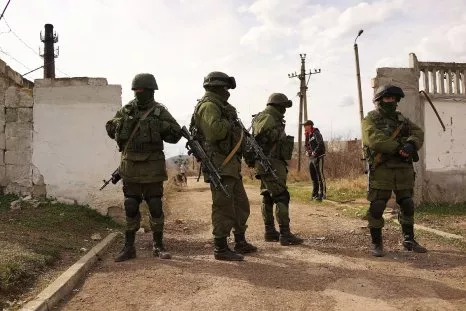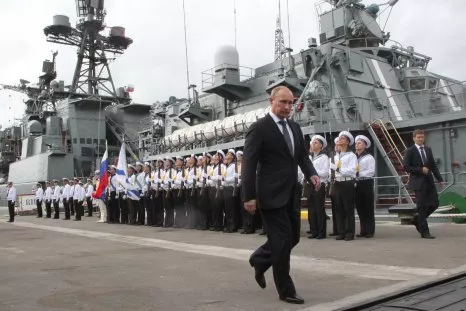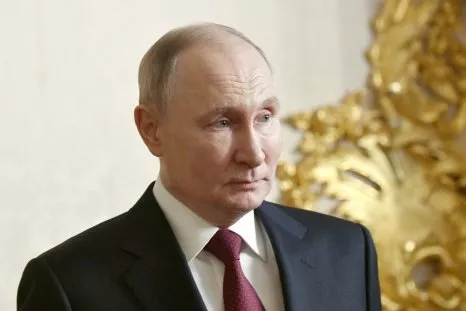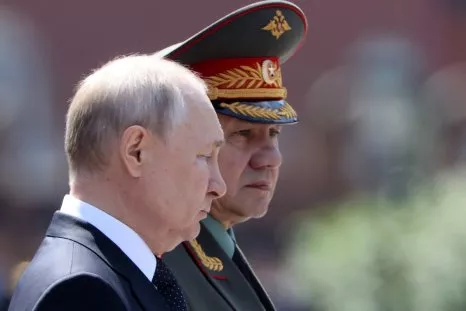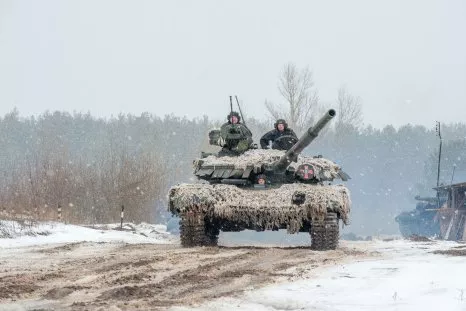Ukraine War Maps Show How 2023 Counteroffensive Played Out
Ukraine's long-awaited 2023 counteroffensive was supposed to precipitate another humiliating Russian collapse.
As 2023 turns to 2024, it is clear that Kyiv's operation has not succeeded, even if Ukrainian officials and commanders tout notable victories in the Black Sea and the punishing attrition inflicted on Russia's mauled invading army.
"We have a new phase of war, and that is a fact...winter as a whole is a new phase of war," Ukrainian President Volodymyr Zelensky said earlier in December. The counteroffensive that promised so much, he added, "did not achieve the desired results." Top commander General Valerii Zaluzhnyi has characterized the 600-mile front as a "stalemate."
Armed with a flood of new Western weapons—including main battle tanks—Kyiv was eyeing the Russian "land bridge" of occupied territory stretching from western Russia to the Dnieper river—called the Dnipro in Ukrainian—, connecting Moscow to Crimea. But that strategic corridor remains intact, the cities of Melitopol, Berdyansk and Mariupol all still in Russian hands, and Crimea far from the front.
Zelensky and his top officials have repeatedly pointed the finger at Western partners over the underwhelming results.
"I'm grateful to the U.S. as the leaders of our support," the president told CNN in July. "But I told them as well as the European leaders that we would like to start our counteroffensive earlier, and we need all the weapons and materiel for that. Why? Simply because if we start later, it will go slower.
"I wanted our counteroffensive to happen much earlier, because everyone understood that if the counteroffensive unfolds later, then a bigger part of our territory will be mined. We give our enemy the time and possibility to place more mines and prepare their defensive lines."
Russia's formidable defensive preparations have certainly worked. The New York Times reported in September that Ukraine had won back only around 90 square miles of territory in all of 2023. As the front freezes over, Zaluzhnyi has warned Kyiv's allies not to expect any "beautiful breakthrough."
Ukraine's push began on June 8 in two general directions. The main efforts were southern pushes into the Russian "land bridge" south of the Zaporizhzhia town of Orikhiv, and the settlement of Velyka Novosilka in Donetsk.
Kyiv's forces also continued more gradual offensive efforts around the devastated Donetsk city of Bakhmut. The city was captured by Russian forces in May, but Ukrainian troops subsequently advanced around its southern and northern flanks.
Initial success in all three areas gave way to glacial progress, Ukraine's armored columns slowed by minefields and mangled by Russian artillery, anti-tank weapons and drones. Within days—as casualties mounted and images of burning Western vehicles spread around the world—Zaluzhnyi pivoted to smaller scale attacks.
Maps published by the Institute for the Study of War think tank show small salients carved out by Ukrainian troops. In August, success around the Zaporizhzhia settlement of Robotnye buoyed Ukrainian hopes, as did the simultaneous liberation of Urozhaine across the Donetsk Oblast border to the east.
But in neither location did the Ukrainian advance translate into real penetration of Russia's multi-layered defensive network—known as the "Surovikin Line" and named after a former commander of the invasion force who sought to stabilize Russian forces in Ukraine after major defeats in Kharkiv and Kherson.
As early as late June, Zelensky had acknowledged that the offensive was progressing "slower than desired."
By November, Zaluzhnyi suggested a "stalemate," as Kyiv ramped up preparations for an expected Russian missile and drone blitz through winter, while also defending against a fierce new Russian assault around the Donetsk fortress city of Avdiivka.
While Ukraine's major mechanized efforts to the east floundered, its forces along the Dnieper River in Kherson managed unexpected success.
The broad, fast-flowing river has formed much of the southern front line since the liberation of Kherson in November 2022. The flooding of the area after the destruction of the Nova Kakhovka dam in June made the waterway impassable. But with the waters subsiding in the fall, Ukraine began ramping up amphibious operations there.
Ukrainian troops managed to secure several small but significant footholds on the Russian-occupied east bank of the river and have repeatedly defeated Russian attempts to dislodge them. Hundreds of troops supported by heavy vehicles are believed to be operating on the Russian side of the waterway, posing a threat to key local highways and the approaches to Crimea.
Ukrainians are now steeling themselves for a second winter of full-scale war, with renewed Russian attacks on national infrastructure already under way.
"All attention should be focused on defense, on responding to terrorists on everything that Ukraine can do to get through the winter and improve our soldiers' capabilities," Zelensky said in November.
Kyiv is pushing its Western partners hard for continued, and expanded, aid. But Zelensky faces growing fatigue in Europe and the U.S., with skeptics strengthened by the Ukrainian counteroffensive failure.
Influential Republicans in the U.S.—both on the Hill and in the presidential nomination contest—are stymieing President Joe Biden's Ukraine funding efforts. Some $60 billion remains stranded as GOP lawmakers try to leverage the White House into taking more action at the southern U.S. border in exchange for aid to Kyiv.
"The additional supplemental funding would have been done already had the counteroffensive gone better," Michael Allen—who served as special assistant to President George W. Bush and the senior director at the National Security Council—told Newsweek.
"We used to say that America loves to back a winner, and as soon as the counteroffensive goes well, I think it paves the way for a substantial supplemental to get us through the election," he said. "And when the counter offensive didn't make any real progress, it was hurtful."
"That's not to say we wouldn't have still had irresponsible presidential candidates running around saying that we should cut them all together, or isolationist populist sentiment affecting what Republican congressmen feel like they can vote yes on," added Allen, who is now the managing director of the Beacon Global Strategy strategic advisory firm.
"That would still have existed, but I think it would have been easier on the whole had the counteroffensive succeeded, or just achieved anything and had better talking points," he said.
Disclaimer: The copyright of this article belongs to the original author. Reposting this article is solely for the purpose of information dissemination and does not constitute any investment advice. If there is any infringement, please contact us immediately. We will make corrections or deletions as necessary. Thank you.
